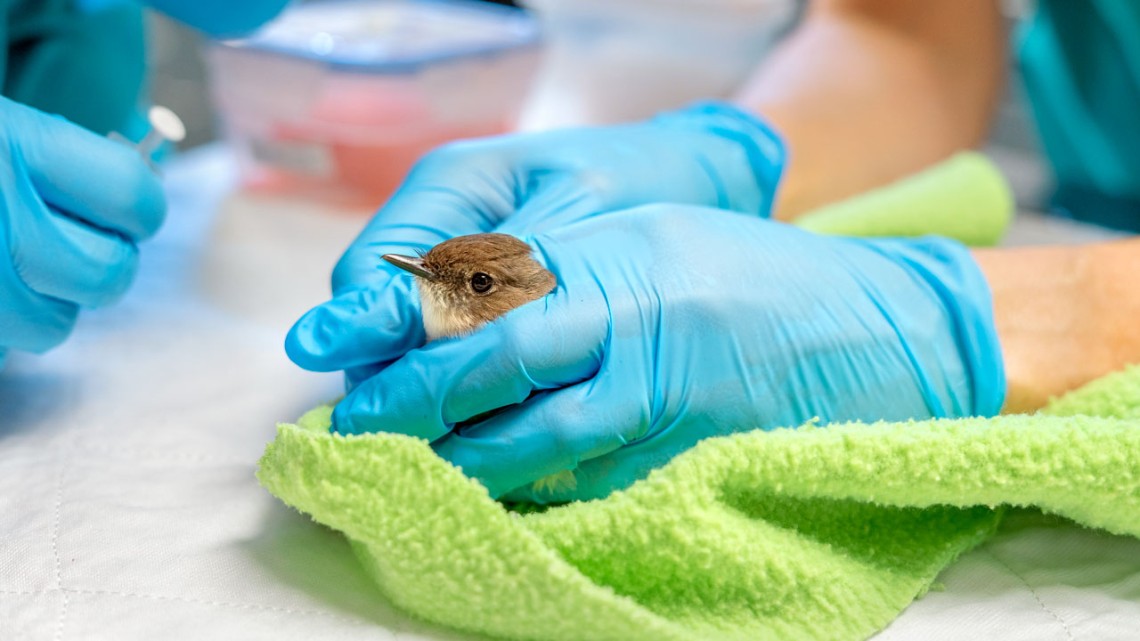
An Eastern phoebe is treated at Cornell’s Janet L. Swanson Wildlife Hospital after being caught in a glue trap.
Wildlife team treats songbird injured in glue trap
By Lauren Cahoon Roberts
As winter recedes, migrant songbirds are returning to the Finger Lakes region to nest and raise their young. One Eastern phoebe, however, may not have that chance.
Found in a glue trap meant to capture insects, the small bird was taken to Cornell’s Janet L. Swanson Wildlife Hospital after its rescuers attempted to free the creature from the powerful adhesive.
“Glue traps are bad news,” said Dr. Cynthia Hopf-Dennis, instructor with the Section of Zoological Medicine at the College of Veterinary Medicine. “While we hope that people avoid using these traps entirely, we ask that they do not try to remove animals from the glue themselves. We have adhesive remover that will allow us to more safely and gently free the animals.”
According to the Cornell Laboratory of Ornithology, Eastern phoebes often breed around human structures, where they build mud-based nests under the protection of eaves or ledges – which may explain why this patient got too close to a glue trap.
Unfortunately, the bird suffered an injured leg, and lost all of its tail feathers and most of its primary flight feathers when rescuers attempted to remove it from the trap. Without these crucial feathers, the phoebe will not be able to fly.
“Songbirds are not releasable until all their tail feathers have grown back in,” Hopf-Dennis said. “It usually takes a month for them to grow back.”
The clinical team found that the songbird’s leg was not broken. By gently manipulating the tiny foot, they noted that it was still gripping well, meaning the leg had only been strained.
The team also assessed the bird’s hydration status by peeking into its mouth.
“If the saliva is thick and ropy, that means the bird is dehydrated,” Hopf-Dennis said. “Fortunately, the phoebe had not been stuck in the trap for long and had not lost much fluid.”
Other animals are not as fortunate as the little phoebe, however. Glue traps by nature catch everything that comes into contact with them, meaning nonpest animals can easily get caught. According to the Humane Society of the United States, glue-trapped animals are typically left to die of starvation and exhaustion. Others will bite through limbs to attempt to free themselves.
The Cornell wildlife clinical team advocates for preventive measures instead of glue traps.
“An appropriate place for a trap is inside your house,” Hopf-Dennis said. “Ideally, people should try to seal up their homes and possibly call a pest-control professional who can help address the root problem of any infestations.”
If you find an injured wild animal, please call the Janet L. Swanson Wildlife Hospital at (607) 253-3060.
Lauren Cahoon Roberts is director of communications at the College of Veterinary Medicine.
Media Contact
Get Cornell news delivered right to your inbox.
Subscribe
